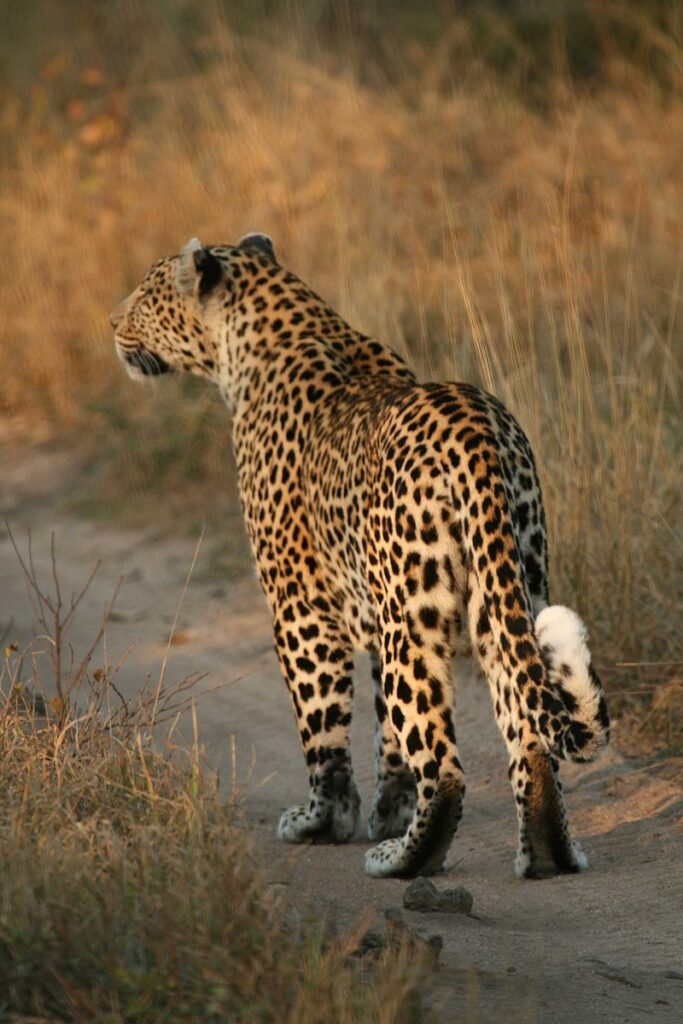World wide conservation efforts are targeted towards umbrella species or the flagship species. The humble leopard doesn’t fit into both and often find itself secondary to the tiger when conservation projects are being planned. Here we disc
Leopards are able to survive better in human dominated landscapes owing to their adaptable behavior. They serve as apex predators in a variety of habitats across the world. It is the responsibility of us humans to acknowledge their contribution towards the ecosystem and coexist with these species.
There is an increasing need to improve connectivity of corridors to reduce human contact and reduce the potential for conflict. As humans gradually encroach on the habitats of leopards, development projects will require appropriate mitigation measures and green technologies to conserve not only leopards but also other predators and the overall biodiversity.

In Asia, leopard subspecies now occur in less than 16% of their historical range, with relatively large populations occurring only in India.
The Sri Lankan leopard Panthera pardus kotiya is the only apex predator in Sri Lanka since the last 10000 years. Around 33 individuals are now found in a solitary protected area – The Wilpattu National Park (1317 km2). However other protected areas have been subjected to anthropogenic pressures and government policies that have facilitated deforestation, encroachment, road development.(K¨opke, 2021). There is a huge responsibility of conserving one of the two island-living species of leopards and preventing genetic isolation.
Resolving Conflict between Humans and Leopards is crucial
Alleviating human–wildlife conflict is a challenge for both wildlife managers and local residents because it requires an integrated approach that is humane, environmentally sustainable, and socially acceptable (Conover, 2002)
Mitigating Human – Leopard conflict effectively is the need of the hour – Imparting environmental education and creating awareness amongst the people living near protected areas will decrease incidents of conflict. Prompt compensation in case of livestock loss or injury after leopard attack will help to build trust with the authorities.
Here are some notable examples of conservation programs for leopards
Living with Leopards
The Forest department has launched a project called “Mumbaikars for SGNP” involving scientists, students and other members of civil society to support leopard conservation and reduce human-animal conflict in and around the park. One such initiative is the ‘Living With Leopards’ project, which raises awareness of how leopards should be treated both inside and outside human-dominated areas. This project has helped decrease the human- wildlife conflict and paved the way for peaceful coexistence. Based on successful model of Mumbai, now this project is also being carried out at Uttarakhand.
Sustainable hunting can help in conservation
Scientists hope that careful study of leopards under controlled conditions will help guide specific conservation measures. An example of this is the Munyawana Leopard Project in South Africa, which implemented sustainable hunting laws in 2006 which resulted in an increase in leopard numbers in the reserve in the KwaZulu-Natal area of South Africa in 2008.
Conclusion
The declining numbers of apex predators is always a concern to survival of any ecosystem. The majestic big cats such as leopards who have wisely adapted themselves to changing environments are not only essential for the food chain but also survival of humans as a part of the food chain. Hence the threats concerning the big cats should be addressed. Use of technology such as GIS ,Telemetry and other newer monitoring devices can help in rapid detection of probable conflict cases. Effective management of protected areas, ecological restoration of habitats and successful mitigation of conflicts by creating public awareness can help in long term conservation of these big cats.
Help us Help Them! Think Wildlife Foundation is a non profit organization with various conservation initiatives. Our most prominent campaign is our Caring for Pari intiative. Pari is a rehabilitated elephant at the Wildlife SoS Hospital. 25% of the profits from our store are donated to the elephant hospital for Pari. Other than buying our wonderful merchandise, you could donate directly to our Caring For Pari fundraiser.
Written by: Dr. Nupur Sawant
